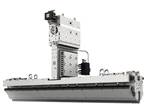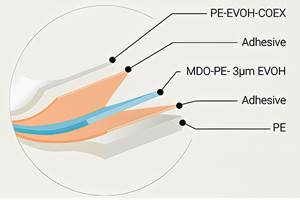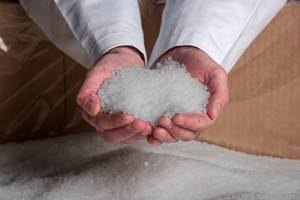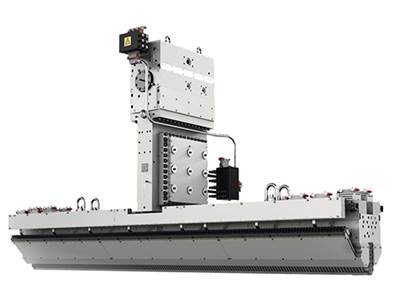Young Stretch-Film Processor Bets on Nanolayers
Going up against companies with as much as double its capacity, young stretch-film processor Zummit believes that new technology — notably 59-nanolayer films — will give it a competitive edge.
A relatively young extrusion processor is in the embarking on an aggressive investment plan in an effort to establish itself as a different kind of company in the cast stretch-film business. Zummit Plastics, which has three 5-layer lines, one 7-layer line and a 9-layer line running at plants in Phoenix, Ariz., and Columbus, Ga., will soon fire-up a 59-nanolayer cast-stretch line in Georgia from Italian machine builder Colines equipped with a die/feedblock package from Cloeren Incorporated.
Research conducted in 2019-2020 by market-research firm Mastio & Co. pegged stretch film as a 2.4 billion lb/yr market in North America. The five biggest stretch-film processors — identified by Mastio as AmTopp, Berry, Malpack, Paragon and Sigma — accounted for more than 80% of that capacity. So, when Zummit opened in Phoenix in 2016 and expanded into Georgia amid the global pandemic in 2021, its strategy was to focus on being a different kind of stretch-film producer, notes Miguel Peredo, CEO. In boxing parlance, Zummit knew it had to punch above its weight. When the new line is up and running, Peredo estimates Zummit will have about 200 million lb of annual capacity, about half of what each of the big five can bring to the market.
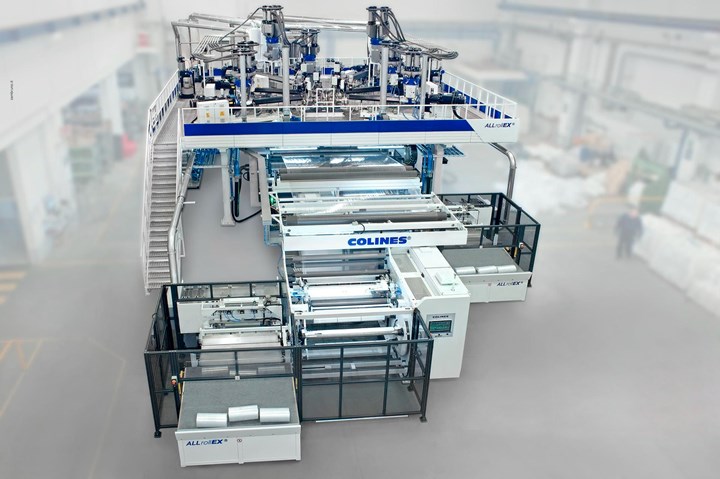
Zummit Plastics latest cast-stretch line from Colines will be a six-up, nanolayer system capable of running at rates up to 3900 lb/hr. (Photo: Colines)
“When we created this company the idea was to be different,” says Peredo, who has been in the stretch-film business for more than 25 years. “For us, it’s not all about pounds. It’s about technology, service and sustainability.”
Nanolayer technology for cast stretch broke through in Europe as a result of collaboration between Eddy Hilbrink, who headed up R&D for Dutch processor Apeldoorn Flexible Packaging B.V. (now Trioworld) and Cloeren President Peter Cloeren. In 2008, Apeldoorn installed a 27-nanolayer line. When Plastics Technology caught up with Hilbrink at NPE2015, he said his company was in the process of converting a line to 55-nanolayers.
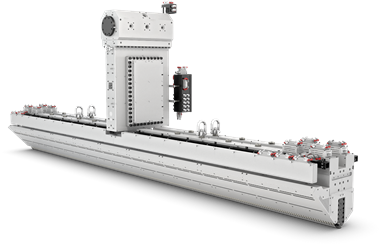
A feedblock and die package from Cloeren enables Zummit to produce stretch film at an industry-high 59 layers. (Photo: Cloeren Incorporated)
In North America, if stretch-film processors are running nanolayer structures, they aren’t saying much about it. Peredo says there is nanolayer capacity on the market — for perhaps up to 42 layers — but believes the 59-nanolayer line at Zummit is the record holder so far in North America. The ability to tailor film structures and recipes across 59 layers not only boosts film performance but offers the opportunity to downgauge as well. Says Peredo, “For example, if a customer is using 0.8-mil-thick film, I can come in at maybe 0.68 mil. They're going to have same performance with the thinner film but significant savings in material.”
Downgauging is not the only path Zummit has taken toward making its products more sustainable. The company also produces a product call BIO-Zummit, which is made with an undisclosed additive that promotes biodegradability. In laboratory tests, biodegradation reached more than 60% in 607 days in a simulated soil environment. “Being environmentally conscious is part of our culture,” says Peredo, who notes that employees wear green-logoed shirts and the firm has green silos to illustrate its commitment to sustainability.
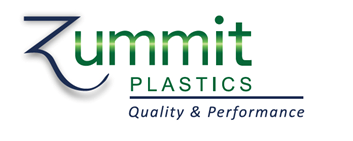
Photo: Zummit Plastics
The line Zummit will be installing this quarter is the third it has purchased from Colines. All are AllRollex 3000-mm (120-in.) six-up lines. Two are in Columbus. The seven-extruder lines can process at up to 3900 lb/hr. Zummit also has stretch lines from Davis-Standard and SML. Combining the Phoenix and Columbus facilities, Zummit has more than 200,000 ft2 of manufacturing space and employs about 180.
Related Content
Multilayer Solutions to Challenges in Blow Molding with PCR
For extrusion blow molders, challenges of price and availability of postconsumer recycled resins can be addressed with a variety of multilayer technologies, which also offer solutions to issues with color, processability, mechanical properties and chemical migration in PCR materials.
Read MoreRecycling Terminology Can Be a Minefield, So We Should Tread Lightly
Loose propagation of terms like “recyclable” and “compostable” has already brought down government regulations on labeling. The plastics and packaging industries should take that to heart with other recycle-related language. Like “monomaterial” for example.
Read More‘Monomaterial’ Trend in Packaging and Beyond Will Only Thrive
In terms of sustainability measures, monomaterial structures are already making good headway and will evolve even further.
Read MoreFoam-Core Multilayer Blow Molding: How It’s Done
Learn here how to take advantage of new lightweighting and recycle utilization opportunities in consumer packaging, thanks to a collaboration of leaders in microcellular foaming and multilayer head design.
Read MoreRead Next
What You Need to Know to Make World-Class Stretch Film
Advances in materials, feedblock/die technologies, and winding can help processors develop more sophisticated cast-stretch products.
Read MoreMaking the Circular Economy a Reality
Driven by brand owner demands and new worldwide legislation, the entire supply chain is working toward the shift to circularity, with some evidence the circular economy has already begun.
Read MoreSee Recyclers Close the Loop on Trade Show Production Scrap at NPE2024
A collaboration between show organizer PLASTICS, recycler CPR and size reduction experts WEIMA and Conair recovered and recycled all production scrap at NPE2024.
Read More

